When trying to add a printer to your Windows computer, you may encounter an error that says Windows can’t install the kernel-mode print driver. This just means that your computer can’t install the driver provided by the printer manufacturer. We are going to talk about this issue in this post and see what you can do to resolve it.
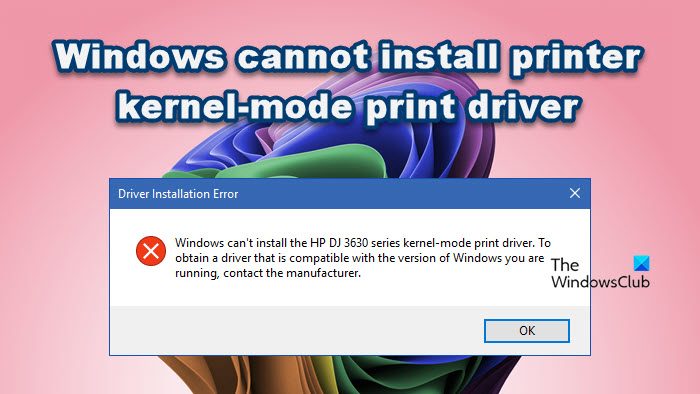
Driver Installation Error
Windows can’t install the kernel-mode print driver. To obtain a driver that is compatible with the version of Windows you are running, contact the manufacturer.
Windows can’t install the kernel-mode print driver
If Windows cannot install printer Kernel-mode print, execute the solutions mentioned below:
- Disconnect and reconnect the Pinter
- Restart the Print Spooler service
- Disable the blocking policy for the installation of drivers
- Update the Printers driver
- Run Printer troubleshooter
- Configure point and printer restrictions.
Let’s get started with this troubleshooting guide.
1] Disconnect and reconnect the Printer
Kernel mode drivers have direct access to hardware software, so, Windows can block or limit their access due to system instability or security vulnerabilities. In such cases, we recommend disconnecting the printer and then reconnecting it to reinitialize the connection. This pushes Windows to install a more suitable driver or resolve any temporary glitches between the system and the printer. Give it a try, and if this doesn’t work move on to the next solution.
2] Restart the Print Spooler service
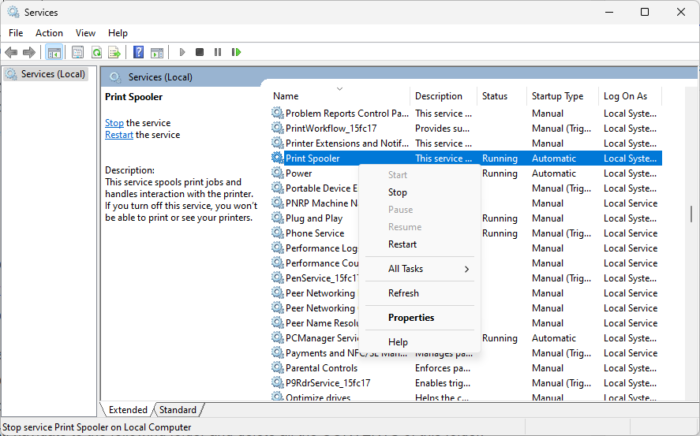
Print Spooler is responsible for managing print jobs and print drivers, so their overloading or getting corrupted can hinder the installation of drivers. Restarting the service clears any struck or incomplete print jobs, so follow the steps mentioned below to do the same.
- Click Ctrl + Shift + Esc to open Task Manager, and select the More Details option to access all the tabs.
- Navigate to the Services tab, scroll down, and select Print Spooler service
- Right-click on it, and click on the Restart option.
3] Disable the blocking policy for the installation of drivers
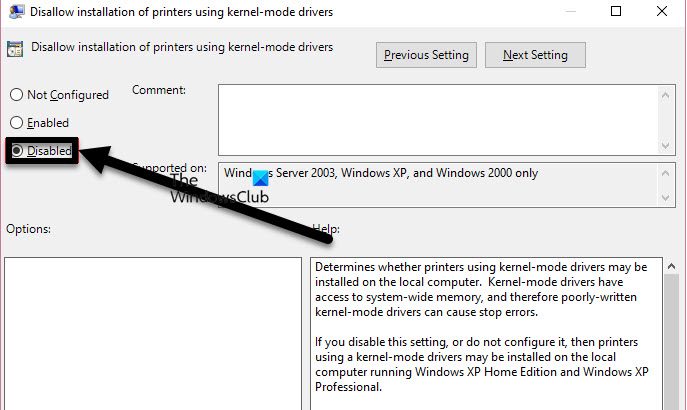
As Kernel-mode drivers function at a high privilege level in the Operating System, the Blocking Policy enables Microsoft to block drivers that may have the potential to crash or attack the system. In such cases, disabling the blocking policy can resolve the issue, and here’s how you can do the same.
- Click Win + R to open the Run dialog box, type gpedit.msc to open the Group Policy Editor, and hit OK.
- Expand the Local Computer Policy option, and navigate to the location mentioned below:
Computer Configuration\Administrative Templates\Printers
- Navigate to the right panel, locate Disallow installation of printers using kernel-mode drivers, and double-click on it.
- A properties Window will appear on the screen, click on the Disabled option, select Apply, follow it by clicking the OK button, and then quit Group Policy Editor.
- Now, go to the search bar, type cmd to open Command Prompt, and select Run as administrator option.
- Execute the command ‘gpupdate’, and if this doesn’t work, execute the following command:
gpudate/force
Once done, close the Command Prompt, and see if installing the software is possible or not.
4] Update the Printer driver
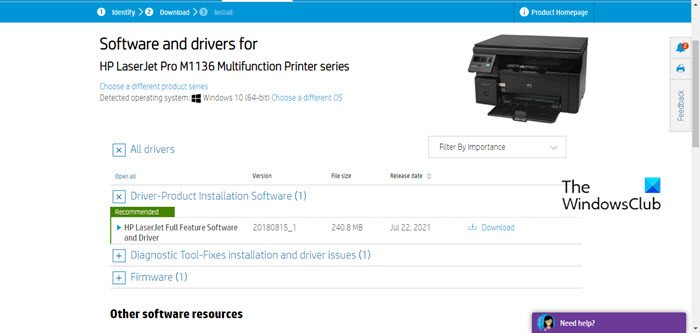
Outdated and incompatible drivers are often the root cause so ensuring that the driver is aligned with the current operating system standards helps avoid such conflicts.
You can download the latest version of the driver from the manufacturer’s website or install a free driver update tool to keep all your drivers updated.
See if the driver is installing without error. If not, see the next solution.
5] Run Printer Troubleshooter
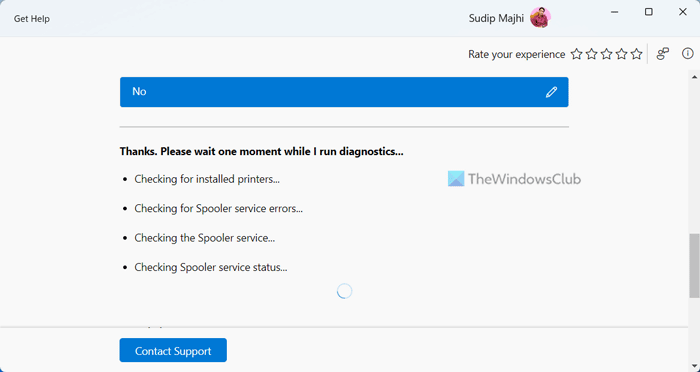
If the issue is still not identified, the Printer troubleshooter can help fix the issues with the printer. To do so, open the Get Help app, enter the issue you are facing, and then follow the given solution.
Wait for the scan to find issues and complete, then select to fix them by following the on-screen wizard.
6] Configure Point and printer restrictions
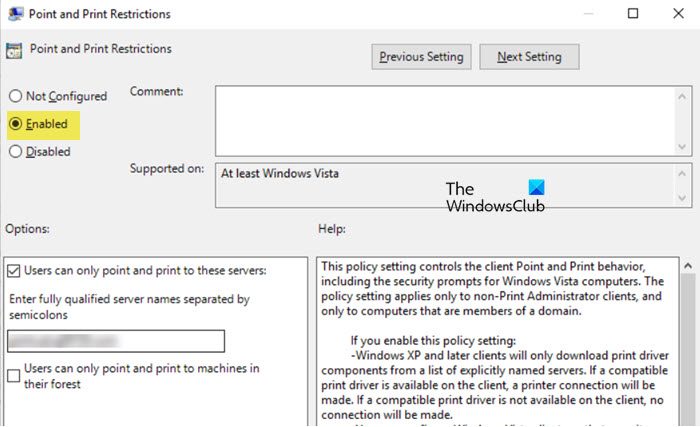
Point and Print restrictions control which print drivers are allowed to be installed on client computers, so we are going to tweak its settings.
- Launch the File Explorer, and navigate to the following location:
C:\Windows\system32\spool\drivers
- Go to the drivers folder, and rename the following folders to remove incomplete or corrupt printer driver installation:
W32x86 X64
- Click Win + R to open the Run dialog box, type gpedit.msc to open Group Policy Editor, and expand Local Computer Policy.
- Navigate to the location mentioned below, then locate the Point and Printer restrictions, and double-click on it:
Computer Configuration\Administrative templates\Printers
- Click on the Enabled option, and uncheck the following options:
- Users can only point and print to these servers
- Users can only point and print to machines in their forests
- Now, navigate to Security Prompts, click on When installing drivers for a new connection drop-down menu, and select Do not show warning or elevation prompt.
- Do the same in the When updating driver for an existing connection drop-down menu, and end the procedure by clicking the Apply and Ok buttons.
- Once done, close the Group Policy Editor, and open the Command Prompt with administrative rights.
- Execute the following command:
gpudate
After the command is executed, check whether the issue is resolved or not.
We hope that you are able to resolve the issue using the solutions mentioned in this post!
Read: Unable to install printer, Another printer with this name already exists
How to permit Kernel-mode driver installation?
To permit Kernel-mode driver installation, users can either disable the blocking policy or configure Point and printer restrictions settings from the Group Policy Editor.
Read: Unable to install printer – The handle is invalid
How do I fix Driver installation failure?
The first step when facing driver installation failure should be to ensure that the driver we are installing is compatible with the Operating system and printer model. So, it is always better to download a driver from the manufacturer’s website than from a third-party website. If you have the correct driver but encountered the same issue, follow the solutions mentioned earlier to resolve the issue.
Also Read: Printer driver was not installed, Element not found.
Leave a Reply